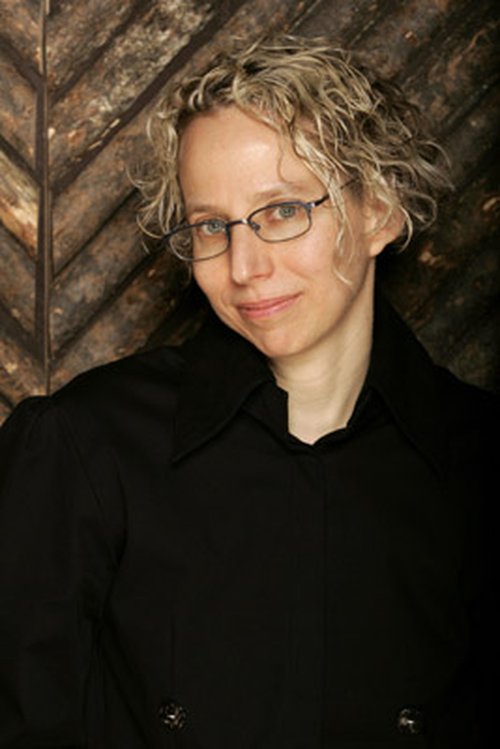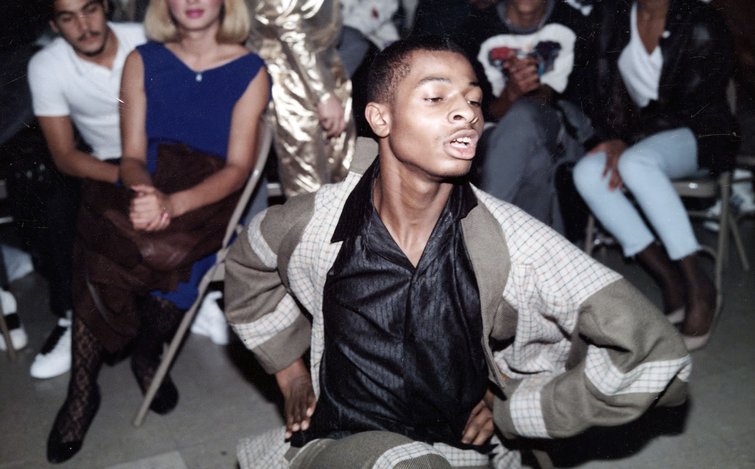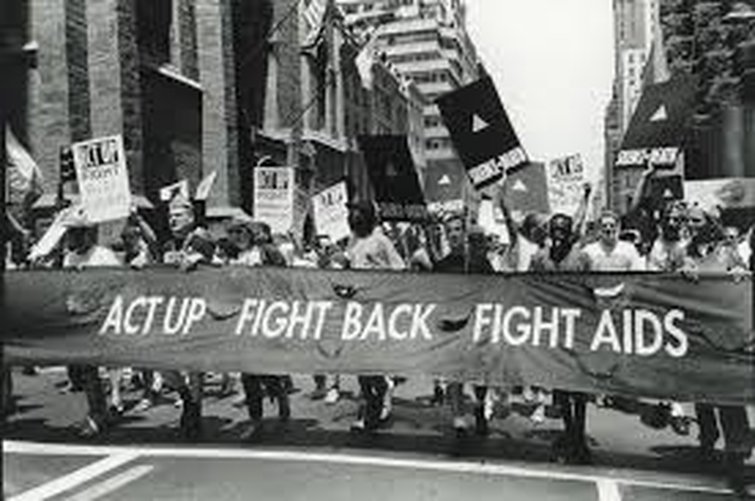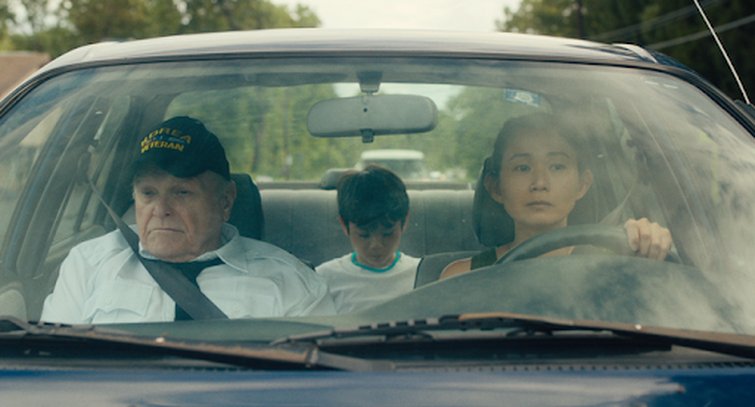
LGBTQ+ Films and Filmmakers That Are Making History
Take a look at a few barrier-breaking LGBTQ+ creators who have tapped into powerful personal experiences to tell important stories and advance vital queer representation.
LGBTQ+ films and queer filmmakers have always existed in the film industry. One of the first nods to Queer Culture was in the 1894 film, The Dickson Experimental Sound Film. It’s one of the first known films with live recorded sound, and it features two men dancing to music played by a violin.
Representation of queer characters really started to gain traction in the 1920s and 30s. In 1922, Cecil B. DeMille’s film Manslaughter was the first film to show a same-sex kiss. Several films starring Marlene Dietrich often hinted at lesbian relationships and even had Dietrich share a kiss with another woman. Dietrich was even known for wearing “men’s” clothing and rocking the heck out of a tuxedo.

Dietrich wearing a tuxedo in the film Morocco. Image via Paramount Pictures.
In college, The L Word (though now very dated) made a great impression on me. It made me feel proud, and it made me feel seen. The L Word gave me the confidence to come out. I desperately wanted more queer media, but it was difficult to find.
I scoured the internet for every bit of queer media I could get my hands on. I watched deeply independent, low-budget films, web series, short films on Vimeo and YouTube — anything. Web series like “Out With Dad,” “Anyone But Me,” “Girl/Girl Scene” (very obscure, I know) meant so much to me because I finally felt real. People like me existed. I wasn’t alone.
Representation is vital to the queer community. It’s been such an honor to witness, and be a part of, such a momentous change in our industry and in the queer community.
The Importance and Power of Queer Representation

Though outdated, The L Word brought queer media to the front line. Image via Showtime Networks.
Queer representation in media helps people identify themselves in the world, to know that they’re not alone, that they’re not crazy or abnormal. Representation in entertainment helps people see who they are on screen, understand how they can influence the world, and helps them remember the values they stand for.
Films and media should be a place for every story. Every person should get to see someone like them — someone they can relate to — and every person should have the chance to feel seen, and know that they’re being represented.
The 1961 film The Children’s Hour, starring Audrey Hepburn and Shirley MacLaine, hinted at a relationship between the pair, which guided the plot into a theme of deep shame. And that was exactly the problem with early queer characters.
Filmmakers played on stereotypes and there was “humor” in it. Having a flamboyant man who wasn’t very good at sports or couldn’t do “manly” things, or having a woman turn a man down to spend time with another woman — how funny!
Then, there was a shift — queer people were portrayed in a negative light or as a cautionary tale. They were depicted as cruel and manipulative. They were home-wreckers and creeps.
In the 1980s and 90s, the narrative began to shift more. This is a movement the 1995 documentary film The Celluloid Closet refers to as New Queer Cinema. The movement included films like Born in Flames (1983), Mala Noche (1986), Paris Is Burning (1990), Poison (1991), and The Living End (1992). These films began to give queer people real representation.
Though we’ve seen immense progress over the years, there’s still a lot of room for improvement. It’s rare that a queer film by a queer filmmaker makes it to “Hollywood” status and is shown in large commercial chain theaters across the country. Most run through the festival circuit, receive recognition, and end up in small independent movie theaters or on streaming services.
Despite the challenges of the film industry, serialized content fares better. Queer series made by queer filmmakers are leading the industry with shows like Pose and Hollywood by Ryan Murphy, Sense8 by Lana Wachowski, Transparent by Joey Soloway, The Bisexual by Desiree Akhavan, and Schitt’s Creek by Dan Levy. These breakthroughs extend even into the cartoon world with Steven Universe created by Rebecca Sugar. The list goes on and on.

Steven Universe incorporates a prominence of LGBTQ+ themes throughout its series. Image via Cartoon Network.
The beauty in this kind of reach is found in the impact on LGBTQ+ youth who are seeing stories that are so much more familiar to them.
Movies, especially old movies, have always been important to my family. I was raised on the classics and remember when I was thirteen years old watching The Children’s Hour. I remember witnessing these two women interact with one another in a way I’d never seen before. It turned my stomach into knots.
My mother, however, wasn’t having the same experience that I was. The energy quickly turned uncomfortable, and we never once talked about it. And while I never forgot that film, I also never watched it again.

The Children’s Hour attempts to tackle society’s disapproval surrounding the relationship between two women. Image via United Artists.
Movies like this brought me face to face with my sexuality way before I was ever ready to deal with it. Perhaps, if I’d had more queer representation growing up, the courage I needed to see who I was would’ve been realized far sooner.
Trailblazers
In the middle of the HIV/AIDS Epidemic, filmmaker Jennie Livingston gave a voice to the voiceless as she covered Ball Culture in the late 80s and early 90s. Desiree Akhavan creates stories based around her experiences as a bisexual — a group of people who are often severely underrepresented. Andrew Ahn brings fresh perspectives by blending his experiences as a queer human with his Korean-American heritage. These are just three incredible filmmakers changing the landscape of queer representation, out of thousands. However, each of their pieces offer a wide range of diversity for LGBTQ+ people to see themselves — and their lives — on the screens in front of them.
Jennie Livingston
Taken from her website, this statement defines Livingston quite accurately:
At their core, Jennie Livingston’s films are about what sustains us in the face of the structures and obstacles that limit and confine us.
In 1985, at the age of twenty-three, Jennie Livingston moved to New York City after graduating from Yale University, where she studied photography.
She soon realized her passion for photography had fizzled, so she set her sights on filmmaking. She briefly attended NYU for a filmmaking class that lasted the duration of one summer.
One day, Livingston came across a group of young men who were dancing in Washington Square Park. When she requested to photograph them, they got to talking. She asked them about the poses they were doing. They explained to her that they were “voguing” and invited her to her first Ball.
Livingston says that when she arrived, she was “astounded.” At the time, she had already identified herself as a lesbian, but hadn’t even begun to play with gender. She knew she had to tell the stories of these incredible people and Ball Culture.
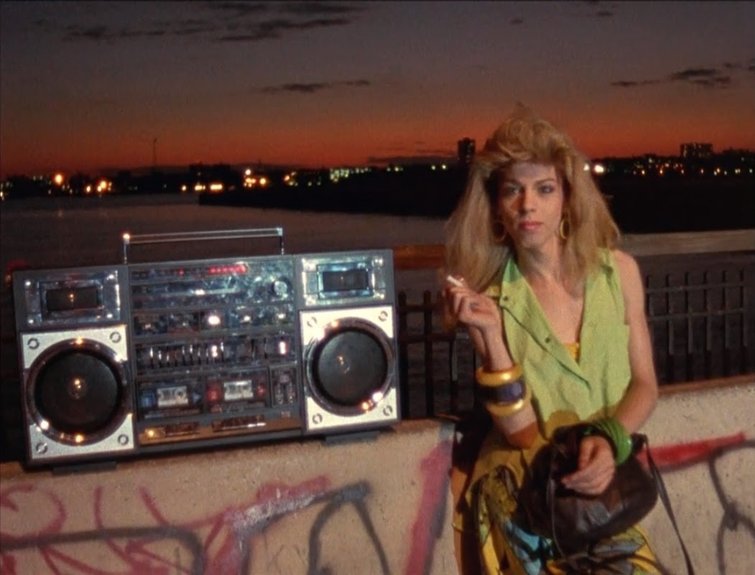
Originating in New York, Ball Culture explores themes including race, gender, and sexuality in our society. Images via Off White Productions Inc.
She quickly became involved with ACT UP, an HIV/AIDS activist organization, and realized there was a massive disconnect between the well-educated, mostly white, activists and the queer community of the ballroom scene. She recalls ACT UP was an atmosphere of “we can save the world” vs. “we can create our own world” that was present in the African American and Latinx community.
Paris is Burning is often seen as a staple of Queer Cinema, and rightfully so. This documentary takes an in-depth look at Queer Ball Culture in the late 1980s and 90s.
The film was originally released in 1990. It was later restored and rereleased through the Criterion Collection in 2015. In 2016, it was selected by the Library of Congress for preservation in the U.S. National Film Registry for being “culturally, historically, or aesthetically significant.”
The documentary is profound because it tells the stories of a dying people whose voice had been silenced. They fought hard to exist in a world they created, where they could be comfortable in their own skin, and say “screw” the gender binary. It forces you to look at the horrific reality of the HIV/AIDS epidemic and starts the discussion of privilege in race, class, opportunity, and gender, even within the LGBTQ+ community as a whole. AND, it continues to remain relevant to this day.
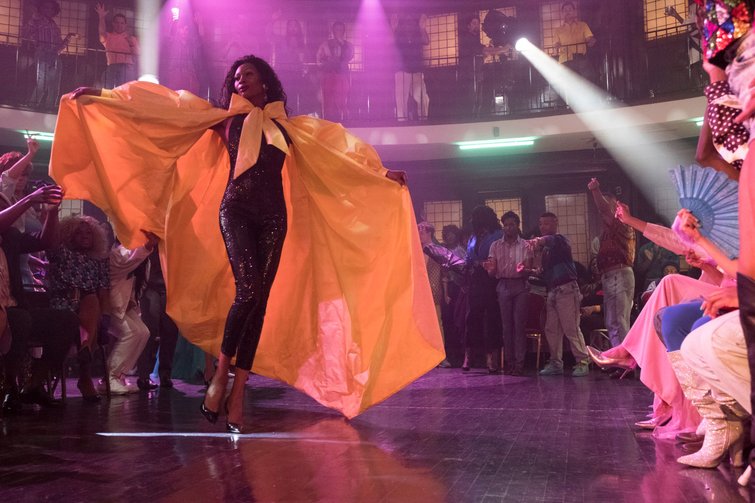
Pose examines Ball Culture in New York circa 1987. Image via FX Network.
Livingston has not let the conversation stop there, either. She’s still making films for and about queer humans. In 2019, Livingston guest-directed an episode of Pose, which also depicts Queer Ball Culture in the late 1980s and 90s that revolved around ACT UP.
Most recently, she is working on a project called Earth Camp One, where she tells her own story of losing family members and our perception of impermanence.
Desiree Akhavan
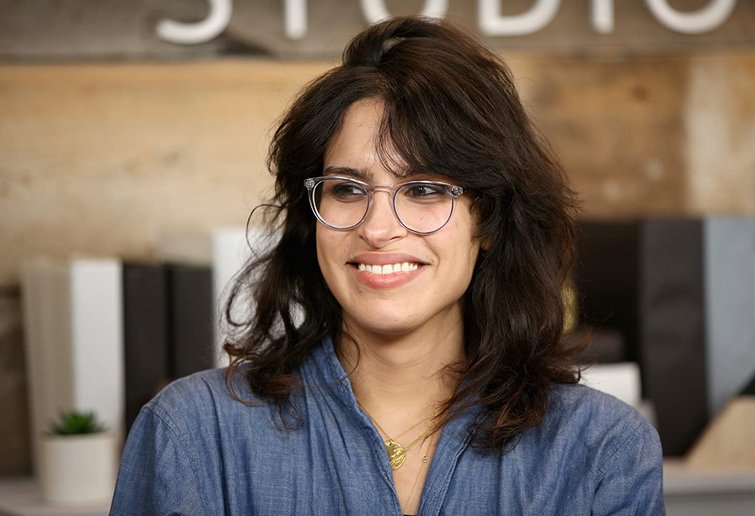
Akhavan is a writer, director, and actor, winning the Sundance Jury prize for The Miseducation of Cameron Post. Image via FilmRise.
Desiree Akhavan’s first feature film Appropriate Behavior (which she wrote, directed, and starred in) follows a bisexual woman of Iranian descent through life in New York as she tries to learn more about her sexuality and hide her relationship from her family. It absolutely draws from Akhavan’s own life and experiences as a bisexual woman.
In 2018, Akhavan won the Sundance Jury prize for her more recent film, The Miseducation of Cameron Post. This top prize has only been given to nine women in its history. (By the way, Sundance began in 1978 — that’s over FORTY years.)

This film explores the struggles of a teenage girl sent to Christian Camp to “cure” her sexuality “issues.” Image via FilmRise.
The film follows the story of a teenage girl who is sent to a Christian camp to “cure” her of her sexuality. Akhavan was very careful not to portray any of the film’s characters as evil, because she didn’t want the film to come off as propaganda.
Like her other work, she again drew from her past experiences, but this time, it was on her experience in rehab. At the age of twenty-five, Akhavan spent time battling an eating disorder in a rehabilitation facility where she went through a lot of self-discovery and inquisition of what actually makes a person who they are.
In 2015, when she first pitched her series The Bisexual (which she also wrote, directed, and starred in), she was completely rejected. Networks advised her that, “We already have a gay show.” They asked, “How are you going to appeal to men?”
But, her push didn’t end there. After putting the project on hold for a bit, she pitched it in the UK, where she found success with the network Channel 4.

The Bisexual is an interesting twist on the internal conflict of “coming out.” Image via Channel 4 (UK).
The Bisexual is Desiree’s effort to give bisexuals representation from a totally new perspective. It explores the idea of dating men after identifying as a lesbian your whole life and having to “come out” a second time.
Andrew Ahn

Andrew Ahn at the 32nd Independent Spirit Awards (2017). Image via IMDb.
Andrew Ahn, a Korean-American filmmaker raised in Los Angeles, studied English at Brown University and later received an MFA in Film Directing from the California Institute of the Arts.
When it comes to making queer films, Ahn didn’t waste any time. When he found himself struggling to come out to his parents, he created his second short film, “Dol,” as a way to force him into doing so.
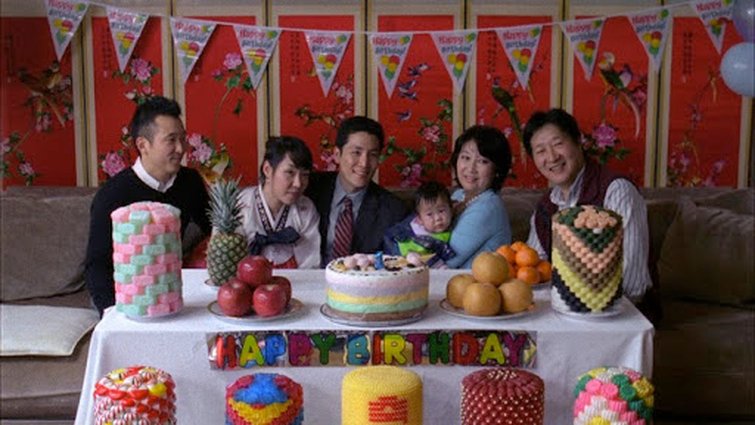
Ahn cast his own family in his short film “Dol.” Image via Topic Studios.
The film is about a gay Korean-American man who goes to his nephew’s Dol, which is a traditional Korean first birthday celebration. He cast his own family and even held a screening of the film in his living room in order to hold himself accountable for what he set out to do — come out. “Dol” was later selected by Sundance Film Festival, and thus put Ahn in the queer spotlight.
His first feature film, Spa Night, again tied together Andrew’s two worlds of being Korean-American and queer. The film tells the story of an eighteen-year-old man who takes a job at an all-male spa in Koreatown, Los Angeles. He soon realizes it’s more than just a spa, and a sexual awakening begins.
After the investors for Spa Night backed out, Ahn took to Kickstarter with his passion-project of exploring LGBTQ+ and immigrant identities. A total of 592 people backed his project, and he was able to see his dream become a reality. The film was nominated for several awards and took home prizes from Sundance Film Festival and The Independent Spirit Awards.
Andrew’s next feature length film, Driveways, is about an Asian-American mother and son who travel to a small town to clean the house of her recently deceased sister. An unlikely friendship builds between the son and the veteran who lives next door. Andrew says his attraction to this film was the exploration of forming bonds while overcoming the vast differences that separate us.
While it’s not an outwardly queer film, Andrew feels that he brings a queer perspective to everything he makes. In reference to this notion, when interviewed by Jeremy Backlow of GLAAD, Andrew said,
As a queer person, I think everything I make is a little queer. I don’t even do it consciously — it just happens. I think it has something to do with my point of view. I’m an outsider, I’m an observer, but most importantly, I respect the people I represent on screen…it’s the respect for another person’s identity that feels really queer to me.
Moving Forward
Andrew Ahn’s views really hit hard for me as a queer filmmaker, because being queer often means coming from a place with a very unique perspective of the world and a different kind of value for humans. Being able to share stories and make films from a different perspective is so beautiful.
Thankfully, the industry is finally moving away from pushing everyone and everything into a box, and more toward creating unique and diverse representations of people. Films and TV series can have queer creators, or queer representation through characters, and not be pushed into a controversial, hard to find, and explicitly queer-only genre.
That said, celebrating LGBTQ+ filmmakers and watching queer media — these activities shouldn’t only exist during Pride Month in June. Diversifying films and TV shows means reaching a wider, more authentic audience, where everyone can feel included and represented.
We need to see more queer films available and accessible to the public, because we know the public wants to see more of these movies. LGBTQ+ films like Love, Simon grossed $66.32 million worldwide. Call Me by Your Name grossed $41.9 million. Audiences are hungry for authentic diversity — let’s give it to them!
Ultimately, the fact of the matter is this: Queer people exist. Being left out or underrepresented in media is never going to change the fact that LGBTQ+ people play a huge role in our world.
Humans have a tendency to fear the unfamiliar, and film and television have a great impact on what people believe and the values they hold. Using media as a tool to introduce people to those fears — while allowing them to see that those fears are baseless — can be invaluable as we continue to move toward a more inclusive and diverse society.
In the meantime, make it a point to check out more queer films and series. Here are some great options you can find on popular streaming services:
Netflix:
- Hollywood
- Disclosure
- Tales of the City
- Queer Eye
- Alex Strangelove
- Sex Education
- Circus of Books
- A Secret Love
- Moonlight
- The Death and Life of Masha P. Johnson
- Feel Good
- Dear White People
Hulu:
- Gaycation with Ellen Page and Ian Daniel
- Tangerine
- High Fidelity
- Everything’s Gonna Be Okay
- Empire
- Killing Eve
- Gentleman Jack
- Portrait of a Lady on Fire
Amazon:
Cover image via FX Network.


